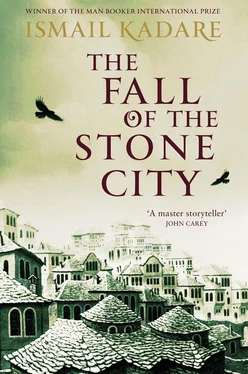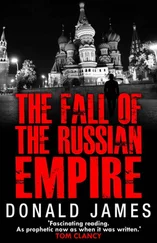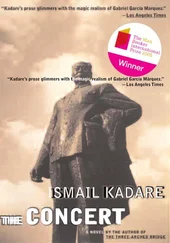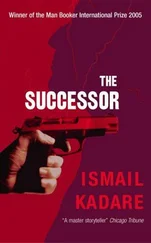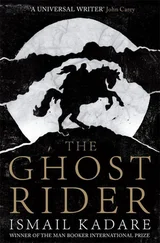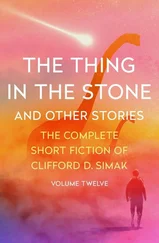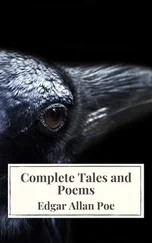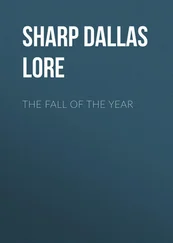All the facts agreed that towards dawn on 6 March 1953, more precisely at three forty in the morning, the prison car left the yard with five people inside: the two investigators, the driver and the two prisoners. It passed through the yard and the main gate of the castle and took the road leading out of the city.
For a long time there was silence in the car and the prisoners gave no sign of life. Then the cold night air revived Big Dr Gurameto and he tried to say something. Because of his lack of teeth his words were indistinct, so nobody paid him any attention. The other prisoner made no sound.
On the highway, when the car passed the cemetery of Vasiliko, Dr Gurameto came to life again. He tried to ask for something, more insistently than before, pointing with his free hand to the cemetery wall. But still nobody listened to him. A few hundred yards further on, he gestured again. After that, nothing worth noting happened until they reached the sandbank by the river.
The experts went back countless times to the short period when the car sped along this stretch of road but could shed no light on this most mysterious moment of all when Gurameto was trying to attract attention. All the witnesses reported him making incoherent noises but none of them could offer any explanation.
Of Gurameto’s three attempts to speak, the experts were able to interpret only the first. Probably the first thing that Big Dr Gurameto understood when he came round was that the person handcuffed to him was not his colleague. Evidently he was trying to say so. “This isn’t the other doctor.” Or, “This man is dead.”
No explanation could be found for his other two efforts to communicate, when he had been even more insistent and almost violent, waving his arm in the direction of the cemetery. The answer to the mystery seemed to lie in this gesture.
The statements described convincingly and consistently his final moments after the car reached the river at the place known as the Brigand’s Ford. The investigators had pulled the prisoners out of the car while the driver dug a hole in the sand. They carried both prisoners to the edge of the hole and, although they suspected that one of them had been dead for some time, shot both several times with their revolvers.
The trial of the two investigators was held towards the end of spring. Shaqo Mezini was sentenced to three and a half months’ imprisonment and Arian Ciu to two and a half, both for “misuse of office”. The mitigating circumstances of the shock of Stalin’s death and especially their victims’ cynical response to this dreadful news were decisive in reducing their sentences. Shaqo Mezini, because of his psychological imbalance, completed his sentence in the psychiatric hospital at Vlora, while Arian Ciu served his in the city prison, not far from the Cave of Sanisha.
Both were later reinstated at the Interior Ministry, but only to work in the uniform section of the Procurement Department rather than the Office of Investigations.
The graves were exhumed forty years later in September 1993, shortly after the fall of communism.
Relatives of the deceased found the bodies handcuffed, just as they had been buried. It was discovered first of all that one of the shackled men was not Little Dr Gurameto but someone else who was never identified. Little Dr Gurameto’s body was never found, despite his family’s persistent efforts. Indeed, the little doctor had left such few and slight traces behind him that some people began to doubt he had ever existed. Further research did not lay these suspicions to rest and indeed only strengthened them. There was no mention of Little Dr Gurameto in the investigation record or the witness statements. Plenty of people believed, even if they did not say so publicly, that Little Dr Gurameto had been merely an exteriorisation or projection of Big Dr Gurameto’s unconscious, a projection which the people around him for some inexplicable reason had accepted.
Dr Gurameto’s file was opened again fifteen years later in the spring of 2007, when the European Union asked Albania, like all the other countries of the former Eastern Bloc, to punish the crimes of communism.
This time, European as well as Albanian experts examined the case for weeks. Rarely had they been given the chance to get their teeth into such an investigation, which involved the secret services of several countries with entirely different regimes and histories: the royal and later the communist Albanian secret service, the German Gestapo and Stasi and the Soviet and indirectly the Israeli secret services. Moreover, besides such curiosities as the rhymes of Blind Vehip and the confessions of women, who, terrified by the summons to the Investigator’s Office, had revealed secrets that they had sworn to take to their graves, the file also included the statements of the surgeon’s daughter and his wife. The latter had testified to things that only she could know, such as the doctor’s nightmares, and legends such as that of the dead house guest, which his grandmother, as he himself had recalled, had used to lull him to sleep. Among the doctor’s several expressions of remorse for things he shouldn’t have done, the most important was his sigh, “Ah, that dinner. . ” which occasionally escaped him quite unexpectedly.
Even so, the more complicated the file on Dr Gurameto grew, the more lucid it became. With the exception of a brief moment that remained shrouded in mystery, the logic and continuity of the whole were incontestable. This fragment of time was an inconsiderable episode in his life, taking no more than five or six minutes, but it was of such intense opacity that it could have lasted for years.
It concerned the dawn of 6 March 1953, or more precisely the short period when the investigators’ car was following the potholed highway alongside the cemetery’s perimeter wall. The records showed that only the first of Dr Gurameto’s three attempts to speak had been entirely explained. The two others, which were the most frightening, had remained obscure.
What had the prisoner been trying to say? What profound distress suddenly gave him the superhuman strength almost to break out of his handcuffs?
Leafing through the file’s innumerable pages, the investigators sometimes thought that they espied a ray of light. This happened especially when they were tired. But any effort of concentration would cause this faint gleam to retreat back into the darkness from which it had emerged, as if it feared exposure.
In time they grasped that this explanation that was on the brink of becoming apparent was less a supernatural sign than something else that had no place in an investigative file. Any investigation would reject it like foreign tissue, not for any esoteric reason but simply because neither investigative skills nor language itself had yet created the terms for explanations of this kind.
There was no evidence anywhere to show what really occurred at the most ineffable moment of Big Dr Gurameto’s life at the dawn of that March day.
Here is what happened.
6 March 1953. Towards dawn. The car leaves the prison yard heading out of the city. The prisoners are silent, perhaps even unconscious. The fresh air revives one of them, Big Gurameto. After his first mumbled attempts to protest that he is tied to a stranger, he probably loses consciousness again. He wakes up later on the highway as the car passes the cemetery wall. In the faint reddish light of dawn he recognises the famous Vasiliko graveyard. He has been there dozens of times for the burials of patients who died under his hands on the operating table, or later. But he has another reason to remember this cemetery. When his grandmother, to soothe him to sleep, had told him the tale of the dead man wrongly invited to dinner, he, like many small boys, had pictured himself in the role of the son, whose father, as the legend relates, gave him an invitation to deliver to the first chance passer-by.
Читать дальше
